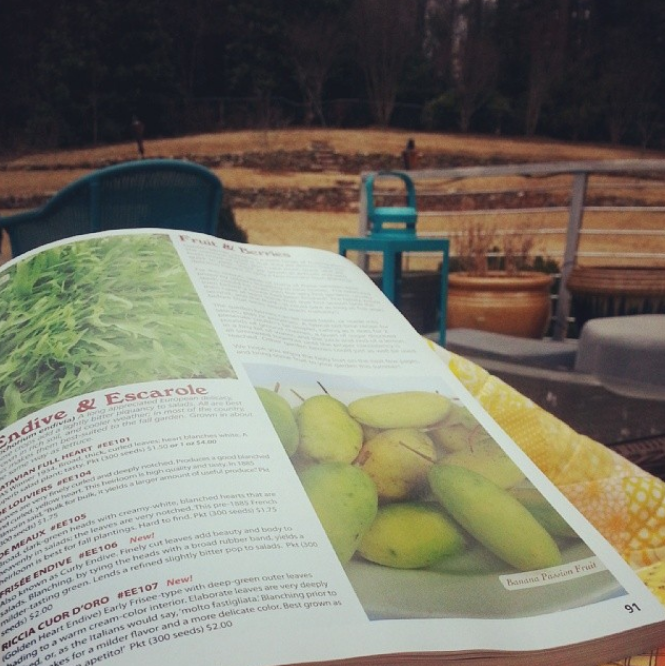
My seed catalog from Baker Creek arrived today, which is pretty exciting. I’m still eagerly awaiting the arrival of my Seed Savers Exchange and Seeds of Change catalogs, so I’m not quite ready to make my selections, but I’m already dreaming of what I’ll choose. I sat outside with a view of the back yard this afternoon–in the post-snow 65-degree weather (seriously, there was still some snow in a corner of the yard and it was well over 60 out there)–and explored the catalog and dreamed of what it is I’m working to accomplish in my garden this year.
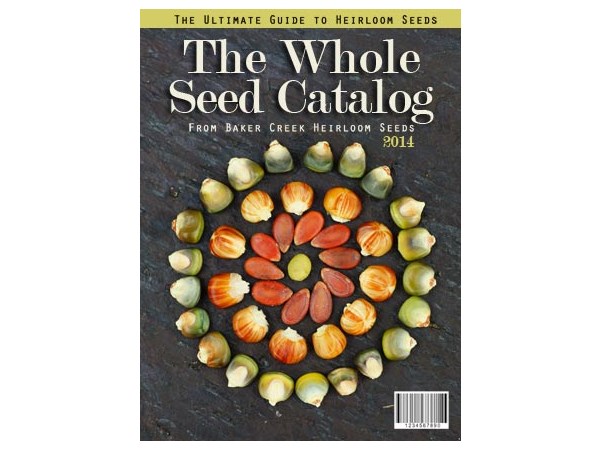
Having gone without a garden for a few years, the muscles are pretty atrophied. I’ve become accustomed to getting my produce from the supermarket, and while I make an effort to go organic on the Dirty Dozen, I can’t say I work terribly hard to be selective in really any other way when it comes to produce. But in the last few weeks, I have surreptitiously been eliminating white flour and white sugar from our family’s diet (let’s see if they notice!), and it have made me think about food A LOT. I mean, A LOT.
Once you start cutting out sugar, you really read some labels and question what’s actually in our food. I’ve been doing something called Clean Eating, which I know virtually nothing about (is it a movement? a diet? a catch-all term? I only just found that link for you, because that’s the kind of girl I am), but that for our family amounts to no pre-packaged foods, no white flour or white sugar, and lots and lots of fresh ingredients as close to their original state as we can get. Now, the kids still eat Goldfish (we get the whole grain variety, at least) and have snacks (we’ve moved to the Trader Joe’s versions of animal crackers and pretzels), but for family meals and for me and the husband, we’re really making a solid effort to eliminate as much non-food from our diets as we can. I’m experimenting with cauliflower pizza crust and sprouted whole-grain breads, and naturally I’m thinking more and more about the veggies we eat.
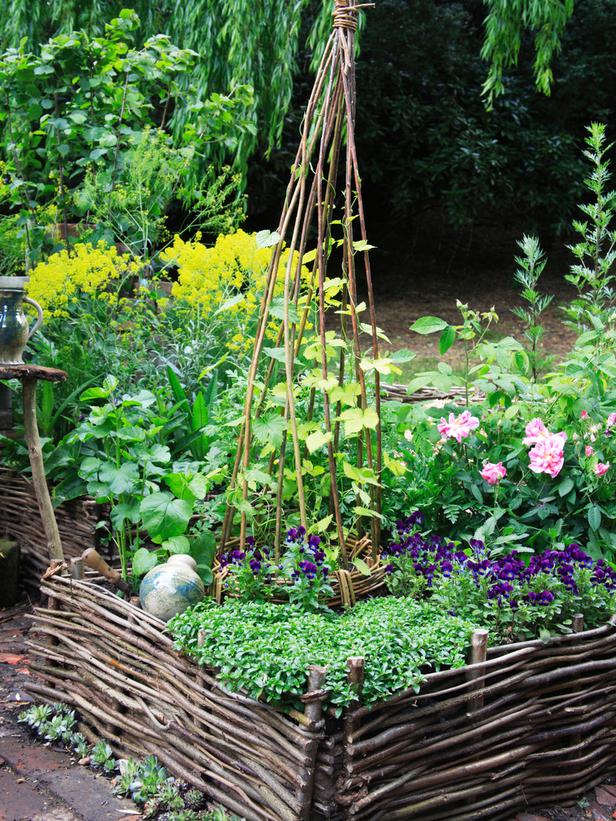
We’re thinking woven willow beds on terraces in the side yard. Image via HGTV.com
Which leads me back to the garden. I love the IDEA of gardening, which is what attracts me to it. But it’s a ton of work, and if I’m going to put in that kind of time and energy, I want a solid return on my investment. Which means I want this year’s garden–and, hopefully, every garden that comes after–to be about more than just the (immense) satisfaction that comes from producing food from the ground with my own two hands. I don’t want a pile of vegetables that I’m hauling around in a basket, hoping I’ll come across a car that’s unlocked so I can stealthily deposit a pile of unwanted zucchini on the front passenger seat and spring away rather than let them go to waste. I want a garden that meets our family’s needs and replaces foods we’d be buying otherwise.
I also want a garden that provides a service that’s greater than just our family, one that goes beyond the years we’ll be living on this plot of land and in this home. I want a garden that improves the soil, and that increases the fertility of our acre-plus in our little suburb. I want to grow plants that reflect what I think SHOULD be happening in food: vegetables grown organically, from open-pollinated seeds that are free of genetic modifications possible only in a laboratory setting, using seed stock (germ plasm) that has historical roots in our region and that will propagate the genetic material of plant strains that may die out from the homogenization of our food crops. You know, just the basics.
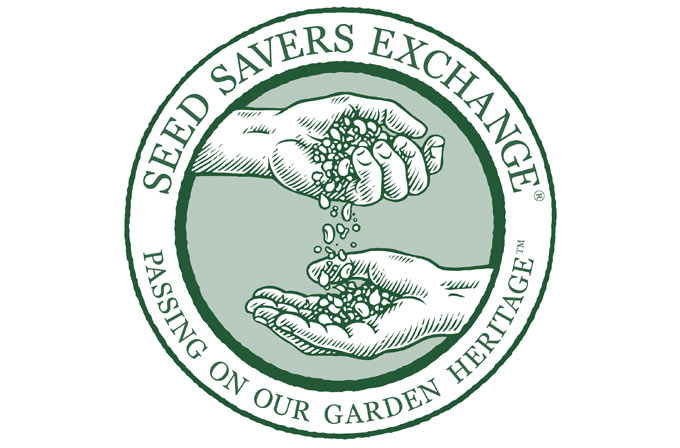
Seed Savers Exchange is one of the many quality organizations working to preserve heirloom, non-GMO seed stock from around the world. You can find them online at seedsavers.org
All these desires made me really pore over the seed catalog today. I am positively desperate to grow EVERYTHING I see in its pages, so many gorgeous colors and varieties, so many odd little quirky plants that I would be delighted and proud to grow out, here on our little plot. But I just don’t have the space. Or the time. Or the skill.
At least, not yet, right?
Isn’t that the Gardener’s Dilemma? Michael Pollen (whom I adore) touches on this theme again and again in his writing: part of the challenge and the appeal of gardening is that (1) you never know enough but (2) in order to learn what you don’t currently know, you must wait out an entire growing cycle–a year, usually–before you can try again to tweak your choices and your techniques and get them right. It’s the major way that gardening differs from sewing: if I have an idea for a sewing pattern, I can try again and again, sometimes in the space of a single night, until I get it just right. I think it’s part of the appeal of quilting for so many folks, that they can make block after block and some of them are awful and others are perfect, but none of them are wasted when they get put into the finished quilt. With growing, we don’t have that kind of flexibility, and have to take notes and make charts and watch and wait to see the grown-out results before we can make new choices and test new hypotheses.
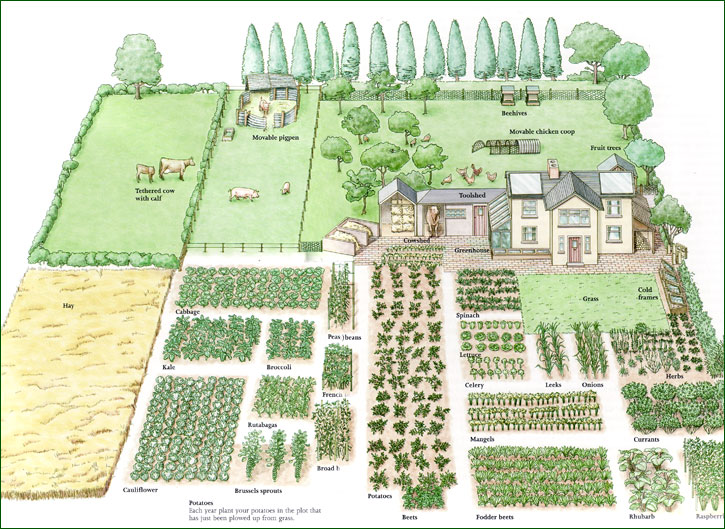
I’m not so into the cows, but chickens! and a goat! are totally part of the long-term plan. If I wasn’t allergic, I’d want bees, too, no doubt. Sample garden plan via usestack.com
So. Here I am, with all those ideas bouncing around in my head, and I’m nearly paralyzed. I wonder if this is part of what made me NOT put in a garden the past few years. The first thing to do is…SOMETHING. So I start to think about what plants I want and what seeds to order and where to put them.
I have a limited space for where I’ll put in the garden beds: it’s a chunk of side yard that currently is covered in weird scrubby grasses and undergrowth, which we can clear out and terrace to make three rectangular beds for planting. But with open-pollinated varieties, if I want to save seed, some of my plants will have to be a minimum of 50 feet away from any close relatives, to avoid cross-pollination and seed contamination: sharing pollen, or germ plasm, between multiple varieties would mean that any seeds saved from those plants might not “breed true” and produce the same traits as the parent plants, which would totally defeat the purpose of savings seeds from plants that hold traits you want to propagate and see season after season. So if I absolutely cannot narrow down my choices of tomato to grow fewer than 6 different types (and I really, really can’t), where on earth do I put them so they’re not pollinating one another and diluting the gene pool?
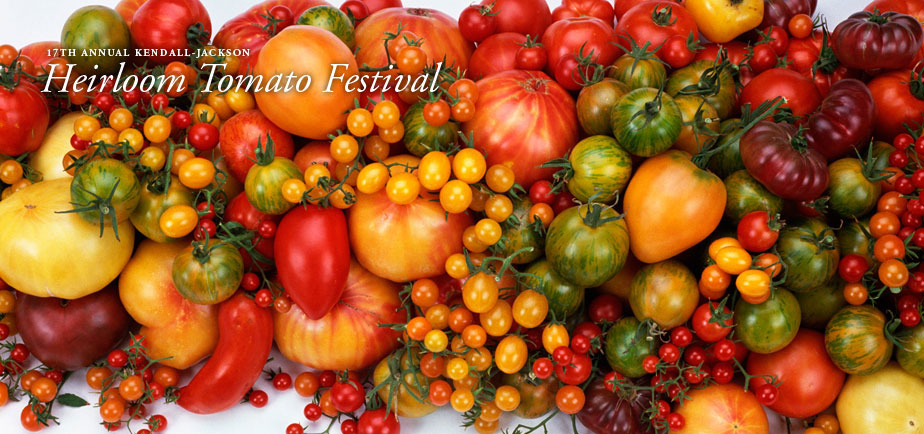
An heirloom tomato festival? I think my head would explode. With joy. Image via kj.com (hosts of this event)
I suspect the answer is that I put some of the plants in the ornamental beds–in normal-people speak, that means plop them in the pine straw beds along the side of the yard, along the driveway, and even at the front of the house. Some plants do this better than others, like amaranth, which makes a really lovely ornamental, and even onions, which have the prettiest purple flowers in the summer. I’m not quite sure, though, at this point, putting in a new garden after a few years of fallow summers, on a new property where the soil and the microclimate are untested, that I’m brave enough to branch out and have, in essence, four or five DIFFERENT gardens on various parts of our property.
Whew. Did you even know there was this much thinking involved?
One of two things will happen next: either I will carefully draft out all the options and create a spreadsheet of variables, considering the ramifications of various courses of action and allocating resources accordingly, or I’ll say, “Screw it” and just toss some plants in the ground with a prayer and a hope for rain.
Realistically, it’ll be the first followed by the second. Because that is how I roll.
Our average frost-free date around here is March 21–we can usually sneak in a little earlier, but not much. I should be putting in brassicas–broccoli and kale and cabbage and Brussels sprouts–now, or maybe even a few weeks ago, if I want them to be all grown up by the time the really vicious summer weather hits. Time to get my catalogs together and circle some selections. Good or bad, it’s decision time.

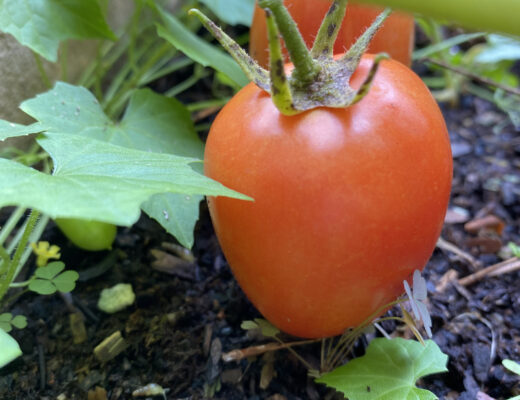
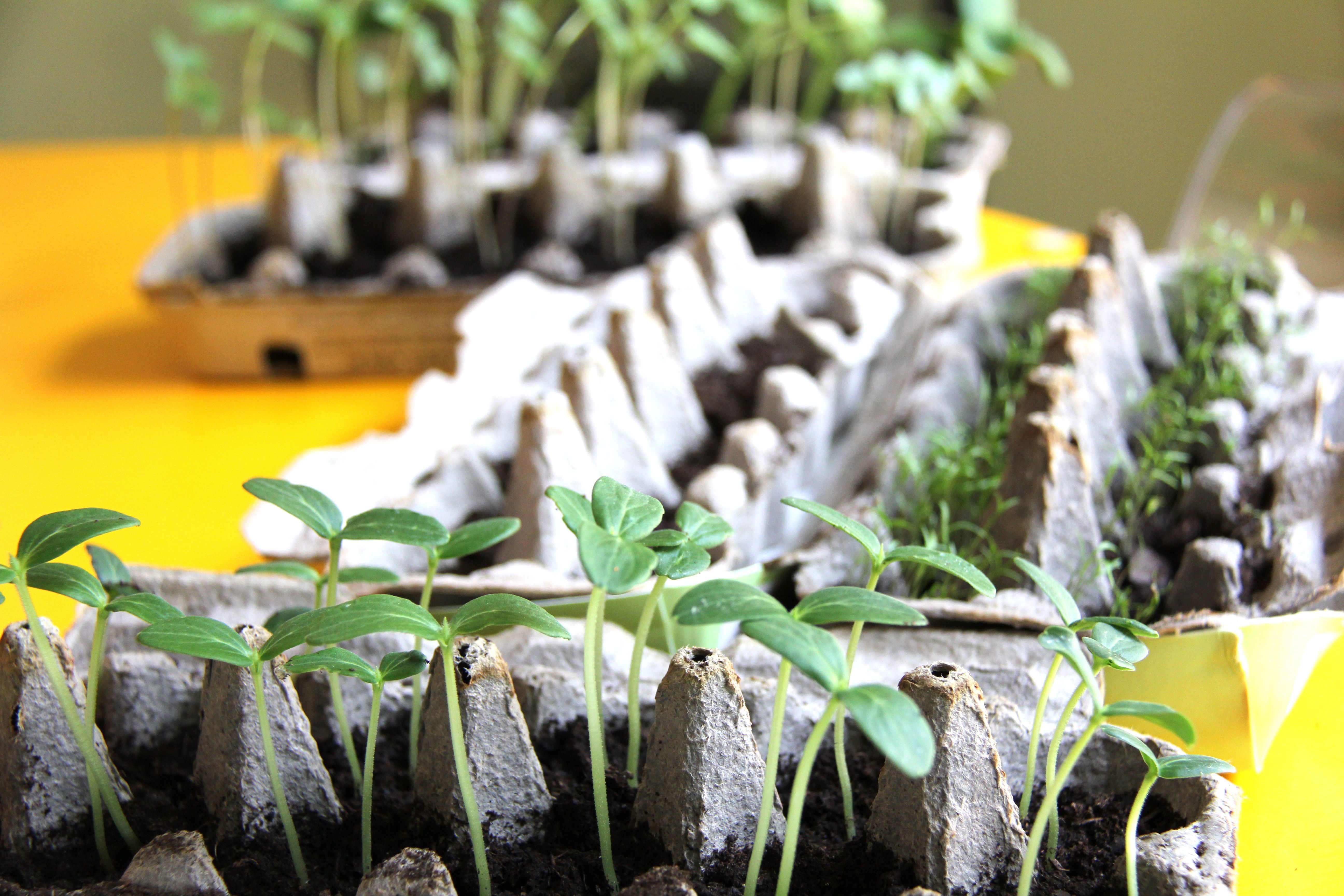
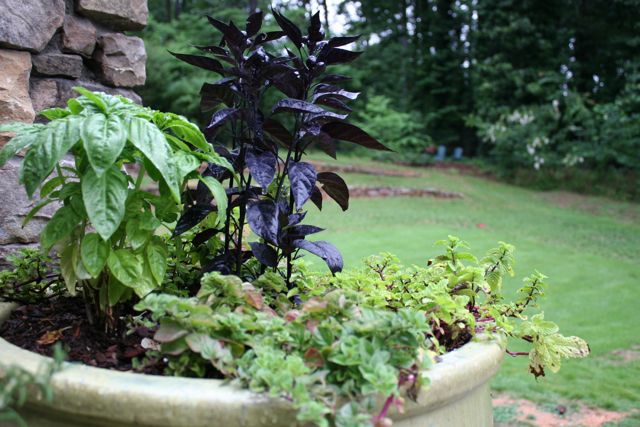
Kate
February 20, 2014 at 11:28 amSo exciting! I can’t wait to see how you plant all these wonderful thoughts and let them grow. Gardening is truly an education and connects us to our surroundings in unexpected ways with each growing season. No year is ever the same and it can be humbling to say the least! It’s also a way to practice patience and to learn to observe carefully with the reward of eating a hearty helping of gratitude. I don’t know anyone who gardens who is not so grateful for that first ripe tomato. And as you already know, the fundamental and most important part of the plants in your garden is not in the leaves, or the fruits…it’s in having strong, healthy roots. I think in turn, gardening helps us strengthen our own roots. Have fun with your plotting and planning! Oh…one more tidbit…when we put in our garden last year (haha, that actually makes it sound like it’s “done” which it never will be…gardens are living things that are ever-evolving), the first thing we did was to get a soil test from our state agricultural extension. Through this we discovered that our soil had very few nutrients so we amended it accordingly with compost and topsoil. It made all the difference in both our vegetable and perennial beds. Wishing you a garden of abundance! xo
Deborah
February 20, 2014 at 11:41 amI totally agree with you–and I think the appeal to me of gardening is that it IS slower and teaches us planning and patience, which I struggle with. I never feel as though I can really take credit for what happens there, it always feels like part magic and part miracle! Just looking at the catalogs is reminding me how much I have missed it these past years when we haven’t put a garden in.
I actually completed the Master Gardener training with our extension service, about 10 years ago, so I knew they did soil testing, but haven’t thought of it in ages! I’m so glad you reminded me! Those state extension offices are completely amazing resources–I wish more people knew they were there.
And don’t we all need reminding that the most important growth isn’t our fruit, it’s our roots? 🙂
Can’t wait to see what you two put in this spring!